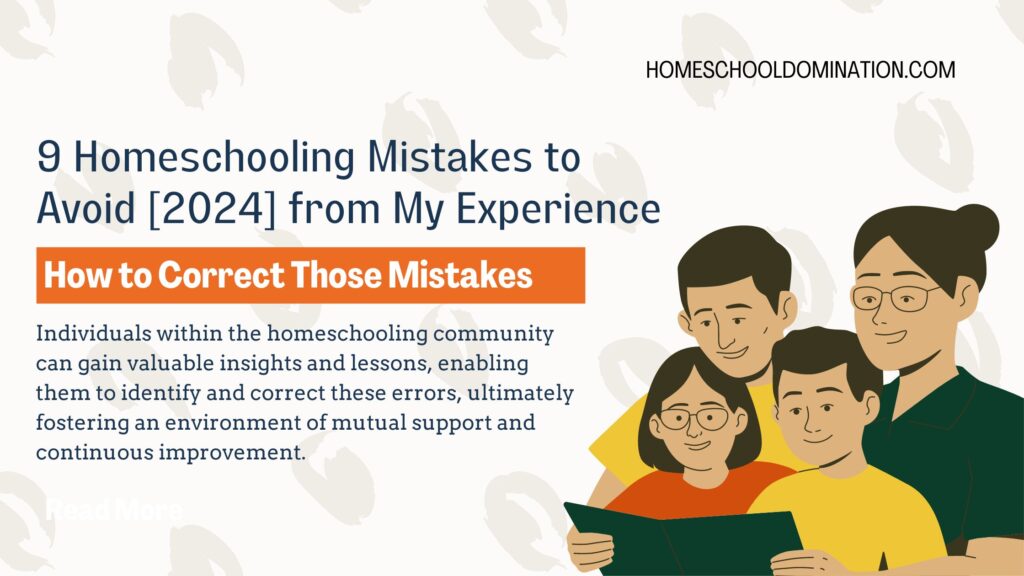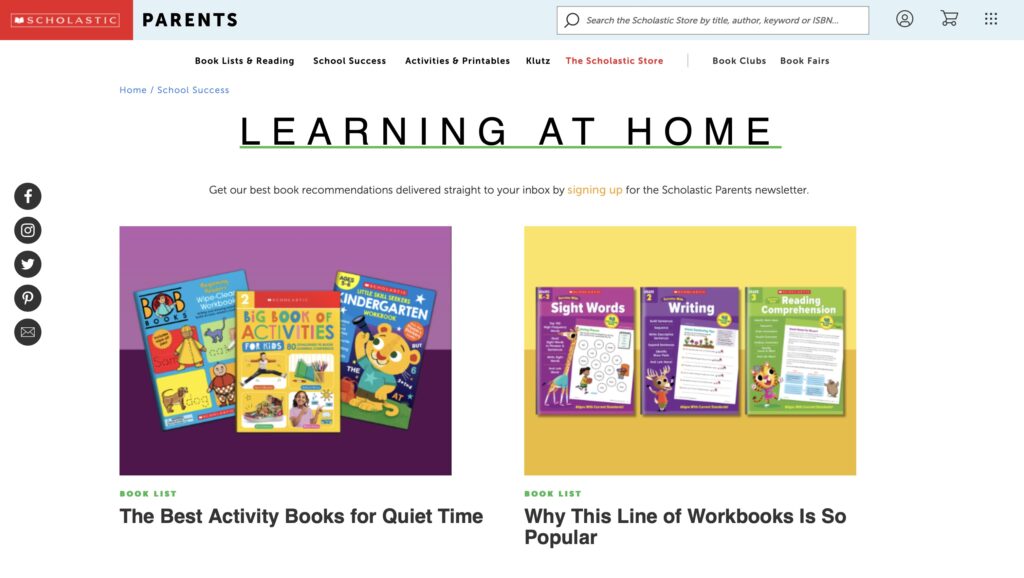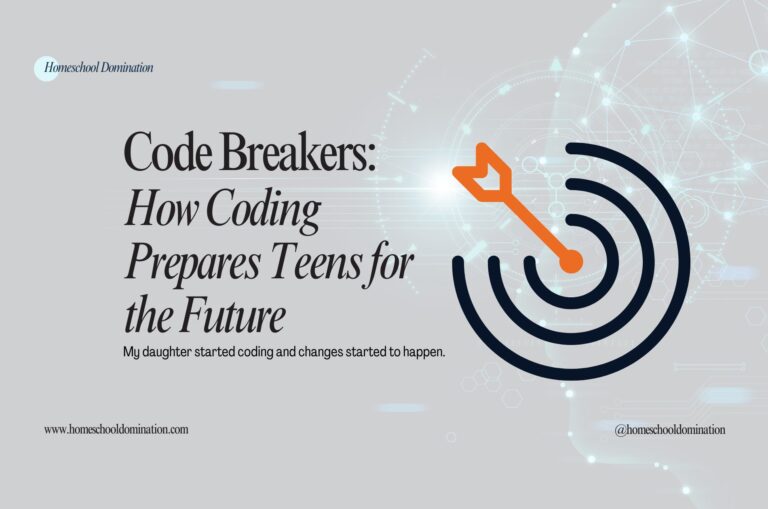9 Homeschooling Mistakes to Avoid in 2025 From My Experience
Do you feel like your homeschooling decision is a big mistake? Fear not because new homeschoolers almost go through the same mistakes.
If you have unused curriculum piling up in your dining table, you are not alone.
I have been homeschooling for more than eight years now. Throughout the years I have made several homeschooling mistakes. While some of them are costly, it allowed me to calibrate my homeschooling based on each of my child’s feedback.
As part of our modern approach, it is okay to experiment with new ideas and these would often results to mistakes. Trust the process because it will contribute to the maturity of your homeschooling learning process.
However, it is essential to recognize that these mistakes need not be repeated by other homeschoolers. In fact, there is immense value in learning from the experiences of others. By doing so, individuals within the homeschooling community can gain valuable insights and lessons, enabling them to identify and correct these errors, ultimately fostering an environment of mutual support and continuous improvement.
Here are 9 homeschooling mistakes to avoid in 2024 that I have compiled and suggested several ways on how to make your homeschool journey unique.

Homeschooling Mistakes to Avoid 1: Buying Too Many Curriculums
My storage room has a lot of unused curriculums and worksheets. I bought them, then it didn’t work with my kids, but then buy it again the following year. Like I never learned. Does that sound very familiar?
To add more problem to this mistakes, the curriculum are just too nice to give away, right? I paid a huge sum for it, plus most of them are very colorful and I thought it is just a waste to throw away.
It’s true that both new and experienced homeschoolers can often fall into the trap of purchasing an excessive number of curriculums. The allure of embarking on a new chapter in education can lead to excitement and an eagerness to gather all the necessary materials. However, it’s important to recognize that acquiring curriculums without first experimenting with can ultimately result in wasted time, resources, and money.
It’s important for homeschoolers to strike a balance between enthusiasm for the journey ahead and the practical considerations of when and how to acquire curriculums. In fact, after reading this article, you’ll start to think that you don’t really need to buy a curriculum.
How to Avoid this Homeschooling Mistake
Instead of starting by buying too many curriculums, start first with free learning sites. When it comes to free learning sites for your school-aged kids, there are several fantastic options available. These sites offer a wide range of subjects and activities to help your children enhance their knowledge and skills in an engaging way. Some popular choices include:
- Khan Academy Kids: This platform provides a personalized learning experience for kids with activities in math, arts and humanities, computer science, reading, social-emotional development, and creative expression. It also has test preparations for SAT, LSAT, MCAT and Praxis Core.
- PBS Kids: Known for its educational television programming, PBS Kids also offers a variety of interactive games and activities that cover subjects like math, science, and literacy.
- ABCMouse: Geared towards early learners, ABCmouse offers a comprehensive curriculum with games, puzzles, and interactive activities across various subjects. This learning site comes with a 30-day trial so that gives you and your child enough days to know if this is a right platform for you.
- Starfall: This site is ideal for early readers, and has multi-sensory interactive games for K-5. Starfall focuses on phonics, phonemic awareness, and comprehension through interactive stories and activities.
- National Geographic Kids: This site provides an abundance of educational resources, including articles, videos, games, and activities on topics like animals, science, history, and geography. This is specially beneficial for those who would like to learn more about nature.
- Scholastic Learn at Home: With a focus on literacy, Scholastic offers free day-by-day projects that cover various subjects and grade levels. It provides reading lists for each level. The site also boost with a book store which allows you to buy books in discounted prices.
- History Channel: This site contain wide range of topic about the history. You can choose for a specific topic and then search the site, or simple use their “This Day in History” segment to learn what is special about this day in history.
Homeschooling Mistakes to Avoid 2: Approaching Homeschooling with the Structure of a Traditional School
When I started homeschooling, my initial thinking was that I need to do better than the traditional school. I ended up replicating the concept of traditional school into our homeschool.
While it worked for a while, the burn out and frustration started to come in after few weeks. This sadly led to many disappointing battles that I wasted my energy on.
Until I realized that it is not okay that my daughter is crying over math. She started to hate the learning process. Then, I knew something had to change.
Then I remember that homeschooling offers a unique opportunity for me to tailor the learning system to each of my child and replicating a conventional classroom setting may not be the most effective approach.
Of course, the importance of structure, routine, and a dedicated learning space cannot be overstated, especially when it comes to creating an environment conducive to learning at home. However, it’s essential to recognize that the concept of learning has evolved beyond replicating traditional school methods.
In the twenty-first century, we have witnessed the convergence of the information age and the rise of artificial intelligence. These developments present us with additional tools that have the potential to greatly enhance the learning experience within our homes.
Embracing these technological advancements can profoundly impact our approach to learning, fostering an environment where individuals of all ages are encouraged to become lifelong learners.
How to Avoid this Homeschooling Mistake
Instead of replicating traditional school in your home, explore your creative side and make a brand new learning system in your home. Here are alternatives that we have put together based on our experience:
- Create a Learning System for Each Child. The traditional school is a learning system by itself. We all know it doesn’t work for most learners. Instead of replicating it, create a learning system that works for your child. Throughout the years, this system will continue to evolve and that is okay. Trust the learning process.
- Learn all year round. Learning is not limited to specific months and hours. Foster an environment in your home wherein learning is a lifestyle. It can come in a form of simple household chores, cooking by following a new recipe, putting in a music center, creating plant nursery, going outside of your house, and the likes.
- Explore other subjects. There are other subjects outside of academics that can trigger interest to your child. It might even led to your child discovering their gifts. Think information technology, foreign languages, other set of alphabets (Chinese, Arabic, etc), sports of any kind and have them compete in tournaments, business and economics, real estate and stock investments, photography and videography, digital marketing, and other subjects that are commonly used in market today.
- Try our Go-Grow-Glow Approach. This allows you to create balance among academics, life skills and hobbies.
- Go for Projects instead of Grade Level. Instead of marking your kids with A, B, C and going through grade level, let them work on projects instead. Have them build their own portfolio at a young age. This approach works for ages ten and up. It can be used for college application later on. At the very least, use it for your own record to see your child’s growth. The project provides them valuable hands-on experience and mostly to learn how to complete a project. That small projects can lead to bigger projects. If you’re lucky, it becomes a bigger dream or mission. In here, your role as a parent shifts from being a teacher to a coach. Wherein you’ll guide them on how to complete the projects and let them do the work.
Homeschooling Mistakes to Avoid 3: Using Same Curriculum for Each Kid
Yes, I did that, too. I tried to keep it simple for my kids and just bought one curriculum for the entire household. The result was another wasted resources and a pile of unused curriculum.
The diversity of learning styles among children is a fascinating aspect of learning. It’s true that not all kids learn the same way, and as a result, using the same curriculum or learning sites for all children may not be the most effective approach. I started to explore the multitude of resources available to find what works best for each of my child. This was not an easy approach, and probably got one headache or two along the way but it was all worth it.
By doing so, I was able to discover curriculum and learning sites that are tailored to the unique needs and learning styles my children. This personalized approach can greatly enhance the educational experience, ensuring that each child is able to thrive and reach their full potential.
How to Avoid this Homeschooling Mistake
- Use Scope and Sequence. This is mostly available in curriculum providers’ website. Each state and country also have scope and sequence guidelines for each grade level which is usually found in the state or national education website. Browse through those and use the free sites listed above to create a learning sequence for your child.
- Mix and Match Curriculum with Learning Sites. Use the free learning sites to teach your child concepts and use the curriculum providers test and quizzes to gauge mastery. Math can be taught using another curriculum or learning site. Then Language can be taught using another learning site.
- Know the other ways of Learning. In our Homeschool Domination 365 campaign, we have outlined the different ways of learning outside of the academic world. These are experiential, multi-sensory, project-based, collaborative, and technology-enhanced learning. Check it out and see what fits for your child.
Homeschooling Mistakes to Avoid 4: No Goals for Each Kid
Initially, all I was wanting was for them to finish the grade level they are in. It became cumbersome in the end because we ended up ditching unfinished curriculum and start with new ones because the school year has ended. This led to them not mastering concepts that they need to master in order to learn the new level. I need to change the way we homeschool. Instead of focusing on the grade level they are in, I taught them how to make goals and we regularly work on getting long term and short term goals. Until they find the right rhythm for them.
The process of understanding and nurturing your child is a fundamental aspect of homeschooling, which holds utmost importance for both you as a parent and for your child’s development. By knowing your child on a deeper level, you can embark on the journey of guiding them to set meaningful goals for themselves.
This not only fosters a sense of purpose within them, but also empowers them to define their life mission and aspirations early on. Through this intentional and personalized approach to education, you can create an environment where your child’s individuality, strengths, and passions are recognized and cultivated, laying a strong foundation for their future endeavors.
This conscious and mindful engagement with your child’s learning journey is indeed a simple yet powerful step that can energize and enrich the homeschooling experience for both you and your child.
How to Avoid this Homeschooling Mistake
- Three Simple Steps. These three simple steps outlines how you can simplify your learning and how to learn with your child.
- Learn with Your Kids. When you learn with them you discover more of them. Thus, making it each for you to set goals with them.
- Go Beyond Grades or grade level. Help them set up a goal aside from finishing a grade or finishing college. Create a blur in the grade level by having them embark on other learning journeys like competing in sports, volunteering in a community, teaching other kids, starting a small farm, performance arts, creating their own personal website, creating their own brand, business and financial ventures, real-estate and stock investments, or lead in a team. There are several avenues available.
Homeschooling Mistakes to Avoid 5: Not Discovering each Child’s Gifts and Talents
The ages 1-12 is usually regarded as the discovery age wherein we allow our children to explore and discover what the world has. This can lead them to possibly discovering their gifts and talents.
Each child has a natural given gift or talent. One way for them to discover this is by exposing them to different learning activities. If learning is limited to the book or the walls of a home classroom, it is hard for the child to discern their calling.
Embracing the world by widening your learning horizon to include what is happening in the world can significantly impact a child’s growth and development.
When children are exposed to various activities, such as sports, arts, music, and social interactions, they have the opportunity to explore their interests and strengths.
How to Avoid this Homeschooling Mistake
- Engage in diverse learning experiences. This open their minds to new possibilities and help them discover hidden talents they may not have realized before. For example, taking up a musical instrument could unlock a passion for music, while participating in team sports could reveal strong leadership abilities. These experiences outside of traditional academic settings can provide valuable insights into a child’s true passions and inclinations, helping them shape their future endeavors.
- By broadening their learning horizons. Children can develop a well-rounded perspective and gain a deeper understanding of the world around them. Exposure to different cultures, languages, and customs can foster empathy, tolerance, and an appreciation for diversity. This, in turn, can contribute to their overall personal and intellectual growth, preparing them to become global citizens with a broad and inclusive mindset. As they navigate through their educational journey and into adulthood, the diverse experiences they encounter will serve as a foundation for embracing the complexities of the modern world.
- Travel Together. It doesn’t have to be a luxury travel but it should be a mix of both local and international. Main goal is to expose themselves to different cultures and communities. Discover what is local in the area and go where most locals go. If your family is a mix of two nationalities, even better, kids can explore the other side of their origins.
- Volunteer or Go on a Mission Trip. First make it as a family event until they can zoom in to a specific kind of mission trip. Allow them to soak in and discover their mission.
Homeschooling Mistakes to Avoid 6: Doing What Everybody else is Doing
Of course, doing what everybody else is doing is the easiest. However, we homeschoolers, do not usually go to the easy route. That is the very reason you have decided to homeschool anyway, right?
So instead of doing what everybody else is doing, it would be wise to set your own path to lifetime learning. Finding innovative and effective educational methods tailored to your child’s needs and interests can be incredibly rewarding.
Embracing a personalized approach to education allows for flexibility, exploration, and the nurturing of individual passions. By fostering a love of learning and critical thinking skills, homeschooling empowers children to become independent, lifelong learners who are prepared to navigate an ever-changing world.
So, take pride in forging a unique educational journey that truly reflects your family’s values and aspirations.
How to Avoid this Homeschooling Mistake
- Define Visions and Missions. Treat your homeschool like a start up company wherein it has its own visions and mission. Dig deep into yourself and family. Visualize where you want your family to be. Would you like your family to make a difference in the world? Would you like to keep things simple and enjoy life? Would you like your family to be financially free? Once you have that defined gear your family’s learning to those visions and missions. While you’re getting good at it, allow each child to dream big, then attach those big dreams to their own vision and mission.
- Define your Core Values. These are principles that will become handy during your crossroads. Your faith, your thoughts about money, your thoughts about learning, your thoughts about world in general. Define what is acceptable and not acceptable while keeping an open mind. Let these core values help you during your decision-making.
- Keep All these Visible. Have the dreams, visions, missions and core values printed in big letters and have them visible. Just seeing it everyday becomes real already.
Homeschooling Mistakes to Avoid 7: Comparing Homeschool to Another Homeschool
I can’t blame myself doing this. In traditional school, most parents compare their child to my children. It is also a human nature to compare ourselves to others. Then, I learned that comparing our homeschool to another homeschool is the most stressful situation I got myself into. So that I took a 360 degrees turn and just compare our homeschool from where we were the previous year. It was so much better and peaceful.
Each family is unique. It has its own situation. As a family, it’s essential to acknowledge and celebrate these differences, understanding that what works for one family may not work for another. The same applies to homeschooling approaches – what works for one family may not necessarily work for another.
It’s important to remember that comparison can be detrimental, especially in the context of homeschooling. Each family’s journey is unique, and there’s no one-size-fits-all approach. Embracing this uniqueness allows for the creation of a tailored learning experience that caters to the specific needs and strengths of each child.
By carving out your own homeschooling journey, you can focus on individual growth and progress rather than comparing your child’s development to others. This approach fosters a healthy mindset, encouraging each child to measure their progress against their previous achievements, fostering a sense of personal growth and improvement.
How to Avoid this Homeschooling Mistake
- Find your North Star. You know why the North Star or Polaris is very special and important? Simply because it serves as guide to travelers. It will always orients travelers to where north is and from there they can determine the other directions (south, east and west). Find that guiding star. Find your why you homeschool, and it should tell you how you will run your homeschool.
- Have a Mindset Shift. You are you. You are unique. You are gifted to be a parent. Trust that gift. Yes, you have homeschool. You know your kids better than their previous teachers. You can teach. You can be a coach. You can learn with them.If you don’t know how to teach a specific topic, learn with them. It would be the best memory.
Homeschooling Mistakes to Avoid 8: Over-Scheduling
Yes, been there, done that. We all want to cover a whole lot of opportunities. There are sports program, co-op, eight subjects, tons of worksheets, music class, art class, church, grocery shopping, visit to the parks, full-time or part-time work, medical check ups, and other part of life that just happens.
While it’s essential to cover core subjects and educational activities, it’s equally important to allow for flexibility and time for exploration. Homeschooling provides the chance for children to delve deeply into their interests and the world around them, so creating a relaxed schedule is key to a successful homeschool journey.
Furthermore, some parents may struggle with finding the right balance between being a parent and a teacher. It’s essential to maintain a nurturing and supportive environment while also providing structure and guidance academically. Finding this balance can be challenging, but it’s crucial for a positive homeschooling experience.
How to Avoid this Homeschooling Mistake
- Block vs Loop Scheduling. Pam Barnhill has illustrated two different kinds of scheduling, block and loop. Block scheduling allows you to schedule subject matter by month or by semester. This would prevent you from cramming all subjects into one specific period of time. The loop scheduling on the other hand, allows you to define list of subjects in importance and loop through it. Each subject is not assigned to a particular day, instead, students use a list to know which subject to learn and have to mark where they left off. The following day they will start again where they left off and then loop through the list again. For example, if my loop list is Bible/Faith, English, Math, Music, Science, Bible/Faith. Then, today I only managed to complete up to Math, tomorrow I’ll start with Music until I complete the loop. Then, start again.
- Define your Block and Limit to Five Learning Areas. First is to define your own block – one month, three months, five months, six months, etc. Personally, I prefer the three months. It is not long, at the same time it is not too short. Then choose, maximum of five learning areas for each of your child during that block. Another option is to use fibonacci series of 1, 2, 3, 5, 8, 13 blocks. This can be weeks or months. You start with one week as soft introduction to your learning areas where you create goals and outlines. Then two weeks to learn the basics of the learning areas. Then three weeks to create projects plan. Then five weeks to implement and present project plans.
- Agile Approach. This is more of an extension of the three month block. Most companies are using this approach to break down big tasks into smaller tasks and complete each tasks in chunks of two weeks called Sprints. So there is one week of planning where you plan what you’re going to learn in the next twelve weeks. Divide twelve weeks into six sprints of two weeks each. Identify your learning areas and divide each learning areas into task. Put tasks into each sprint. The child is responsible for finishing those tasks in the span of two weeks. Everyday, all you need is to ask each child how they are progressing and if they have any blockers. If at all helps, a Scrum board really helps to keep track of their tasks. Use Trello as a simple tool to keep track of their To Do, Doing and Done tasks.
Homeschooling Mistakes to Avoid 9: Not Being Future Ready
The integration of information and artificial intelligence not only changes the way we acquire knowledge but also introduces new dimensions to the learning process. By leveraging these advancements, we can encourage a dynamic and adaptable approach to education that is tailored to individual needs and capabilities.
Embracing this shift can truly open doors to enhanced learning experiences, enabling individuals to explore diverse subjects and develop critical skills in ways that were previously unimaginable. As we navigate the intricacies of this technological age, it becomes increasingly clear that the potential for learning knows no bounds.
It is within our grasp to harness the power of information and artificial intelligence, shaping a future where the pursuit of knowledge is a lifelong endeavor, enriching our lives in ways that transcend traditional boundaries.
How to Avoid this Homeschooling Mistake
- Learn the Art of Reverse Engineering. Once you know your child’s dream look for the existing success stories of the same dream (hopefully there is) and learn how they got there. It could be reading their memoire, wikipedia page or biography. Start your child’s path from there. Remember to tweak the path in order to suite your child’s learning style and your life situation. If your child wants to pursue a specific degree in college, look up in the university’s page the requirements needed to be admitted, then gear your learning with it.
- Know the Trends. Knowing what is trending and knowing how long will it last will give you a glimpse of life skills that your child needs in order to thrive in the world. Don’t be scared getting into some unchartered territories. For sure, there are several resources available in the internet. If there’s not, make one. You can even start a business out of it. I would usually look at job market to see what skills most companies are looking for. Then, find a suitable free learning resources about a skill. I have my child try to see if it sparks some interest then go from there.
- Think Automation. With cheap tools and apps plunging into the market, you can easily find a tool or app that suites your homeschool needs in order to automate daily task as homeschooler. Like scheduling, creating a lesson plan, learning apps, learning website, keeping grades, i-cloud and the likes. The list is almost endless.
If you have additional mistakes that you have encountered in your homeschooling journey, comment below. If you have related articles or blog on how to correct and avoid these mistakes, please send us the link.









